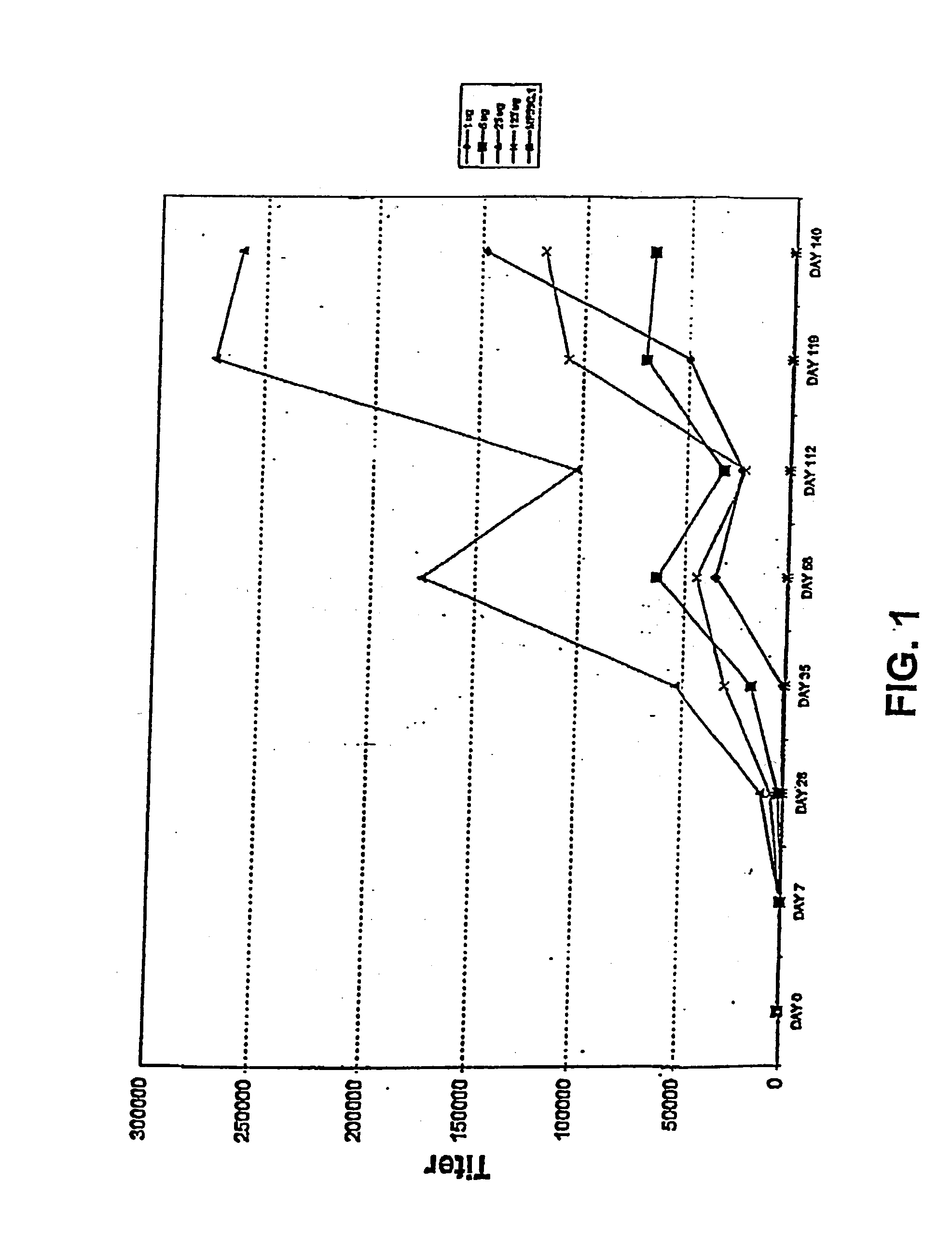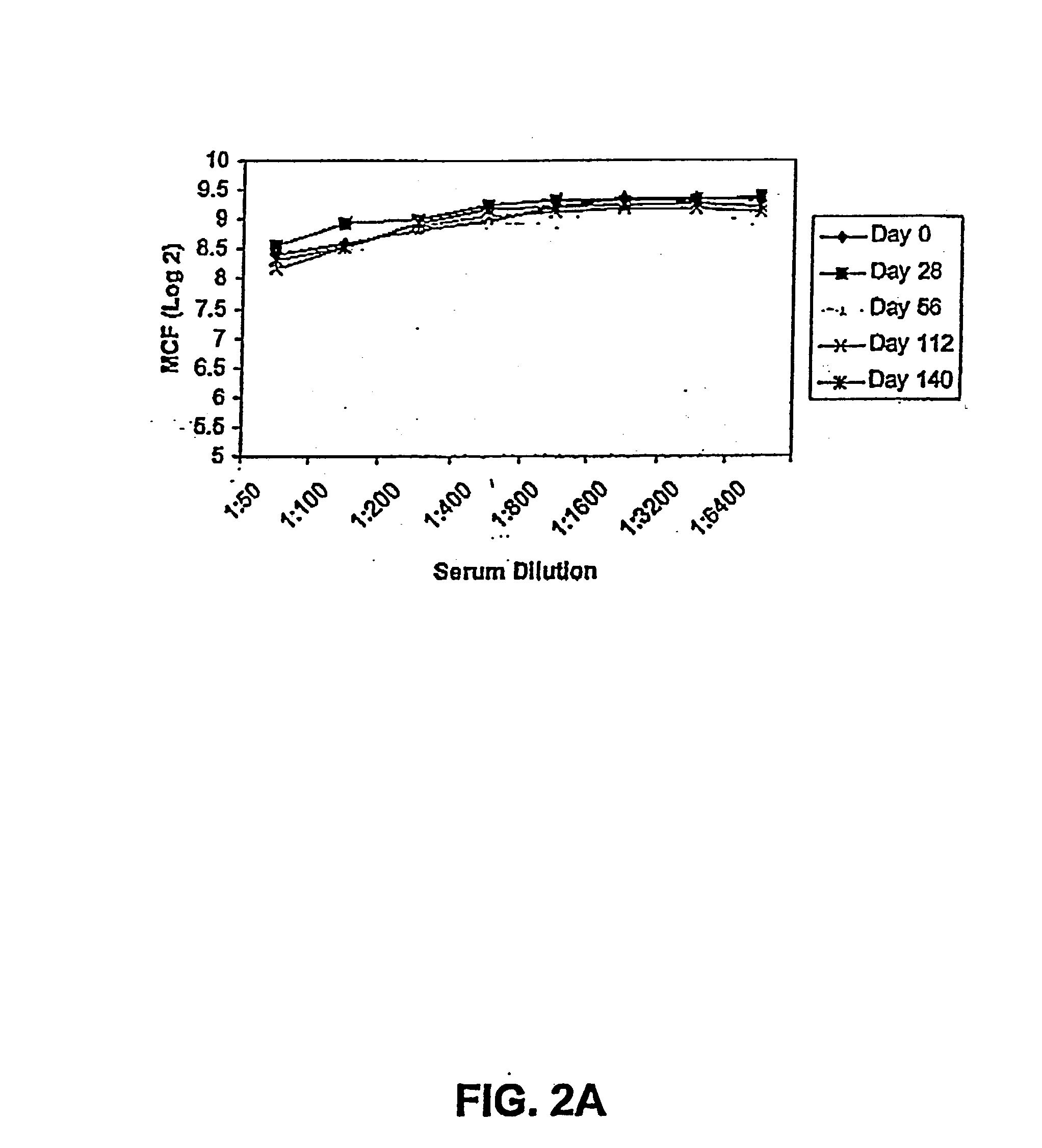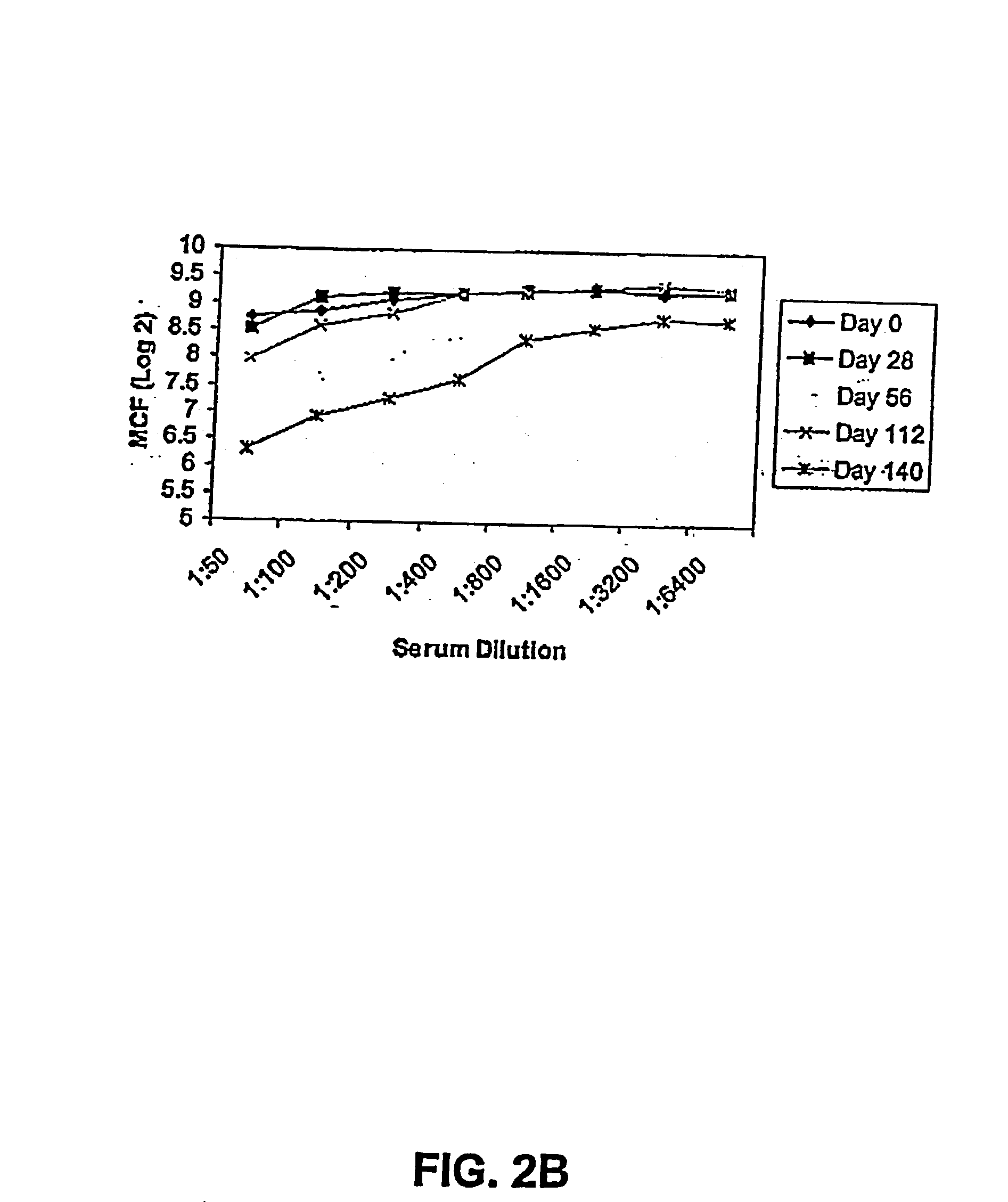Method of administering FimH protein as a vaccine for urinary tract infections
a technology of urinary tract infections and fimh protein, which is applied in the direction of antibacterial agents, peptide/protein ingredients, antibacterial medical ingredients, etc., can solve the problems of increased or present in serum and/or mucosal secretions, and achieve the effect of reducing the incidence of urogenital tract infections
- Summary
- Abstract
- Description
- Claims
- Application Information
AI Technical Summary
Benefits of technology
Problems solved by technology
Method used
Image
Examples
example 2
6.3 Example 2
[0216] Passive immunization using the FimH variants of the present invention demonstrated as follows. Anti-sera against FimC and FimCH were generated and tested for reactivity with FimH variants. Two different pools were generated and used for these experiments. Mice were passively immunized intraperitoneally with 100 ml each of either anti-FimC or anti-FimCH rabbit sera 24 hours and 4 hours prior to inoculation. Endpoint titers for the sera were determined to be at least 1:500,000 by ELISA against the respective antigens.
[0217] Bacteria of different E. coli strains were then collected, washed and re-suspended in phosphate buffered saline (PBS) and cell concentration adjusted to OD=1.8 (at 600 nm). This suspension was then diluted 1:10 in PBS and tested for hemagglutination (HA) with guinea pig erythrocytes. This final suspension was used as inoculum and viability was determined on TSA plates. Mice were anaesthetized and then inoculated intraurethrally with 50 ml of E. ...
example 3
6.4 Example 3
[0218] The purpose of this study was to examine the efficacy of FimCH to induce a protective immune response in primates.
[0219] A recombinant FimC and FimH complex was purified from E. coli K12 strain 600 extracted from the periplasm, and purified to over 99% purity as described in Jones et al. (PNAS 90:8397-401 (1993)).
[0220] Bacteria were cultivated in LB agar. Expression of type 1 pili was induced by two 48 hour passages in static brain-heart infusion broth (Difco Labs, Detroit) culture at 37.degree. C. Before infection, expression of type 1 pili was quantitated by titration of bacterial suspension and mixing of equal volumes of 3% yeast cells and bacteria in microtiter cells. Bacterial suspensions showed agglutination titer of equal to or over 30-60. After bacterial challenge in the monkeys, urine samples from days 2, 4, 7 and 12 after challenge were counted by streaking 100 L of serial 10 step dilution onto cystine-lactose-electroly-te deficient agar plates by mean...
example 4
6.5 Example 4
[0231] The purpose of this study was to examine the safety and immunogenicity of this FimCH composition formulated in the squalene-based adjuvant MF59C.1 in human subjects who were seronegative for anti-FimH antibodies. A FimCH composition used in the vaccine, i.e., FimCH is comprised of the FimC molecule, for example comprising the amino acid sequence depicted in SEQ ID No.:2 and FimC molecule, for example comprising the amino acid sequence depicted in SEQ ID No.:4, was tested in a randomized, controlled, double blind Phase I clinical trial in 48 healthy adult women.
[0232] Methods
[0233] The soluble 52 kDa recombinant protein complex of FimC and FimH, FimCH, was recovered from lysed bacteria using a three step chromatographic process. The bulk product is sterile filtered and vialed in a citrate buffer. Shortly before injection into a subject, the FimCH composition is mixed with a squalene-based emulsion adjuvant known as MF59C.1 (Chiron Corp., CA).
[0234] In vitro bindin...
PUM
| Property | Measurement | Unit |
|---|---|---|
| pH | aaaaa | aaaaa |
| pH | aaaaa | aaaaa |
| pH | aaaaa | aaaaa |
Abstract
Description
Claims
Application Information
 Login to View More
Login to View More - R&D
- Intellectual Property
- Life Sciences
- Materials
- Tech Scout
- Unparalleled Data Quality
- Higher Quality Content
- 60% Fewer Hallucinations
Browse by: Latest US Patents, China's latest patents, Technical Efficacy Thesaurus, Application Domain, Technology Topic, Popular Technical Reports.
© 2025 PatSnap. All rights reserved.Legal|Privacy policy|Modern Slavery Act Transparency Statement|Sitemap|About US| Contact US: help@patsnap.com



